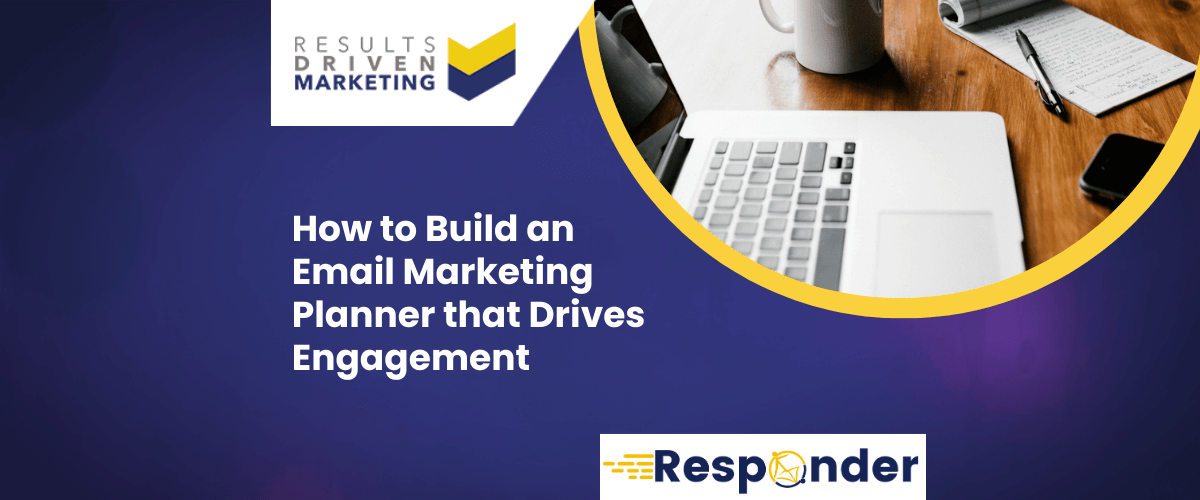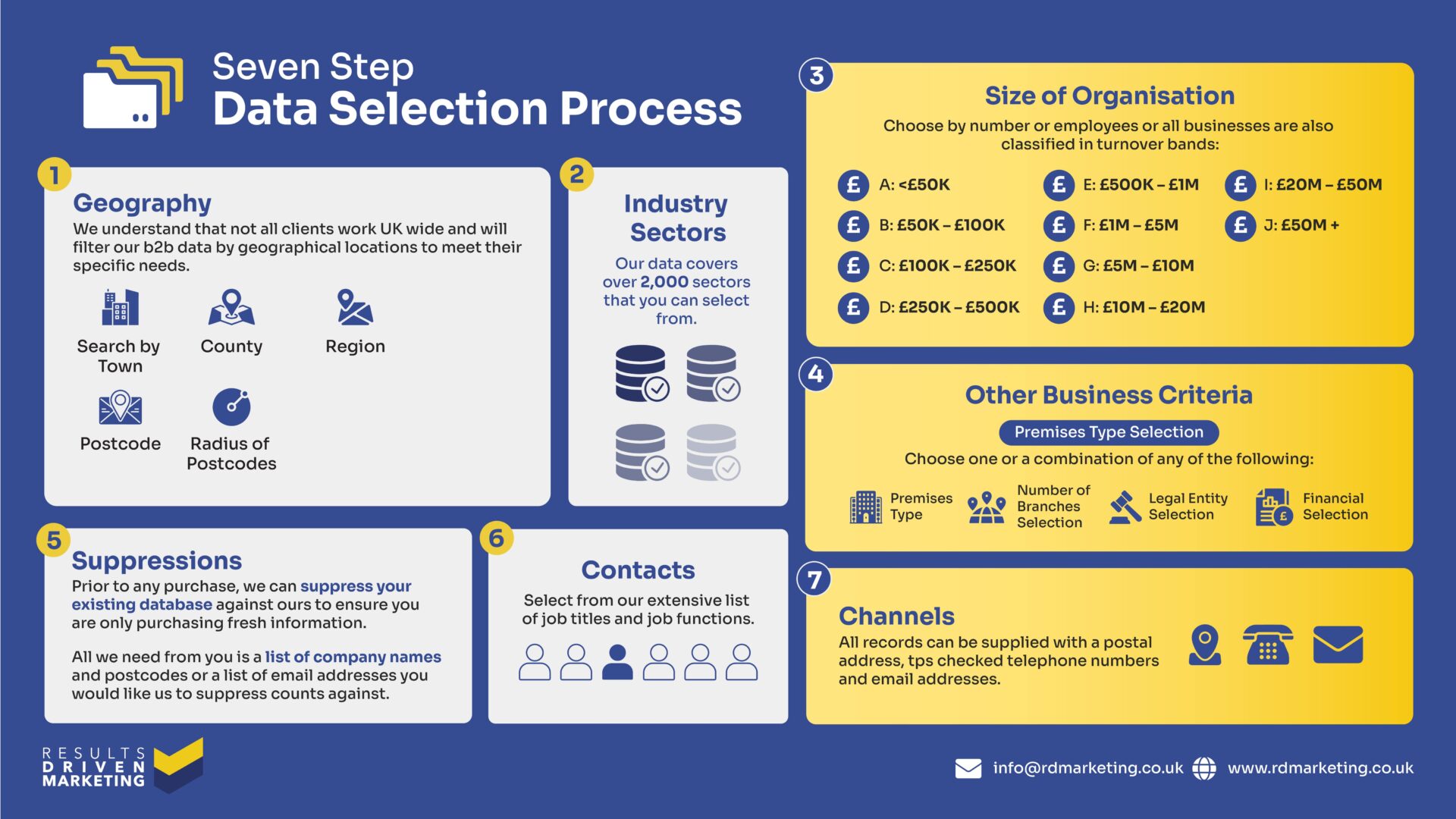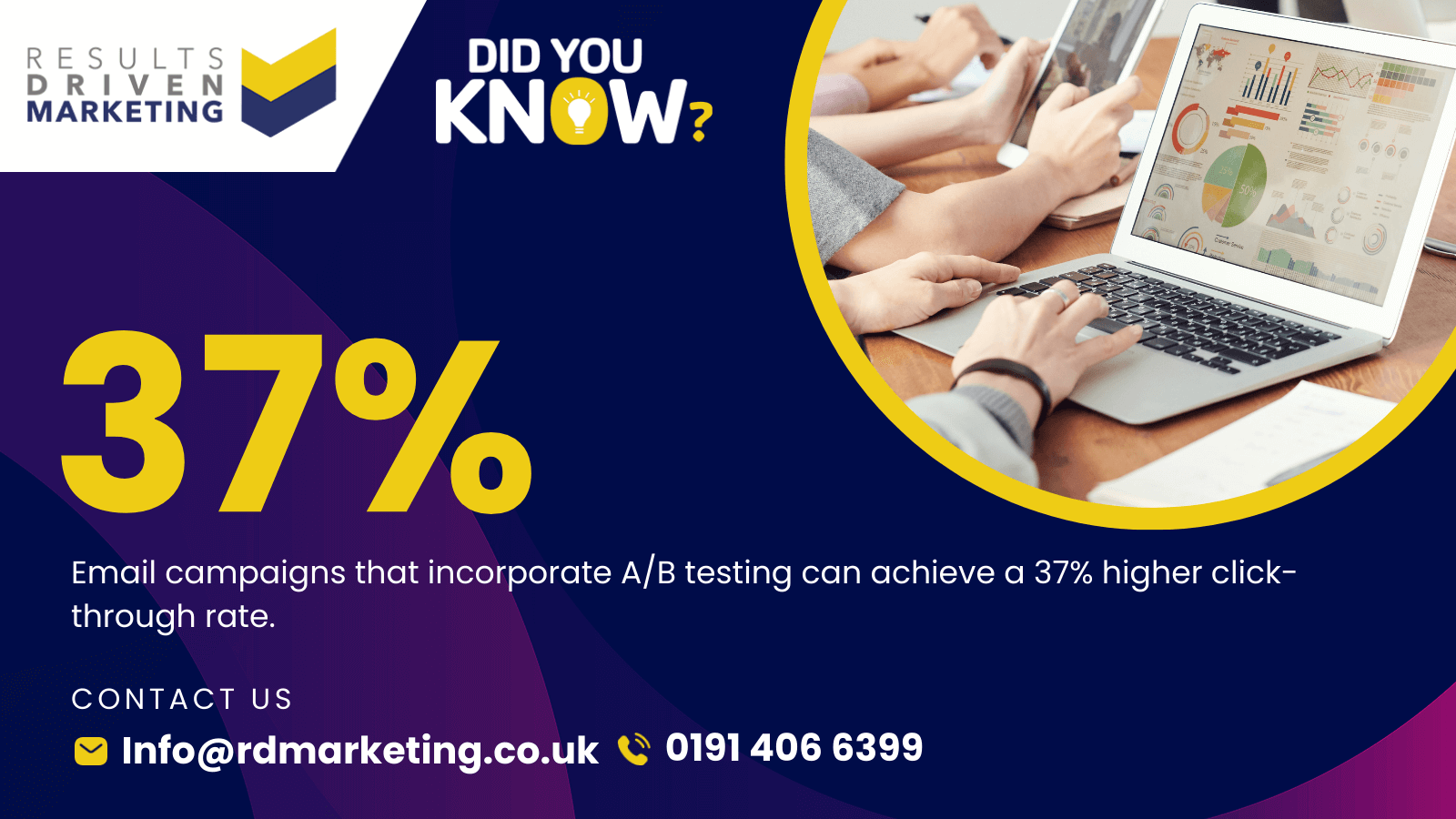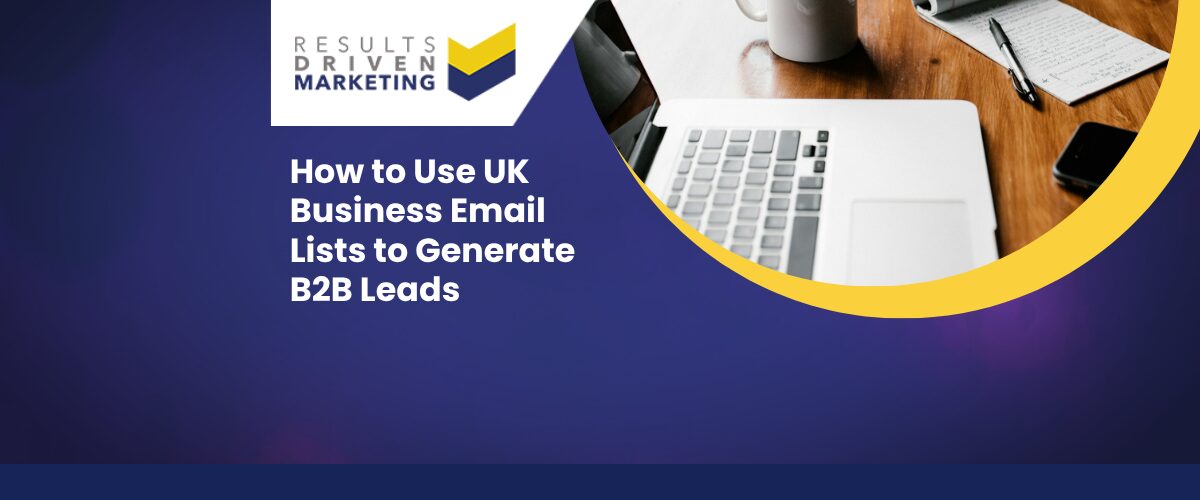
How to Build an Email Marketing Planner that Drives Engagement
An email marketing planner might sound like just another piece of advice, but trust me, it’s honestly one of those tools that can really help you step up your email game without feeling overwhelmed.
If you’ve ever felt like you’re just randomly shooting out emails and hoping something sticks, you’re definitely not alone. With a proper email marketing planner, you’ll actually give yourself a structured roadmap that leads to stronger brand recognition, improved organization, better audience targeting, and ultimately, higher engagement rates.
For example, imagine boosting your campaign’s reach by enhancing your lists with B2B Data from RD Marketing. Then, take that even further by using their Data Enrichment Services to ensure your contact info stays fresh and precise. The result? You’re not just blindly sending messages—you’re sending them to people who are way more likely to care.
And that’s what a solid email marketing planner is all about: helping you deliver messages that actually resonate with the right audience, at the right time, for the right reasons. It’s time to stop guessing and start strategizing.
Table of contents:
Understanding the Components of an Effective Email Marketing Planner
Creating an effective email marketing planner is more than just jotting down dates and drafting messages. An email marketing planner is a structured blueprint that organises every element of your email campaigns, from setting objectives to tracking results.
It’s a one-stop solution to streamline your strategy, align your messaging, and ultimately drive engagement. A great email marketing planner combines clear goals, strategic audience segmentation, carefully curated content themes, and measurable KPIs. Let’s break down each of these essential components.
Goal Setting
Every effective email marketing planner starts with clear, specific objectives. Setting goals provides direction for each campaign, whether your primary aim is to increase open rates, drive more clicks, or nurture leads into conversions. When defining your objectives, keep them focused and measurable. For instance:
- Increasing brand awareness: By engaging a larger, targeted audience using our Email Address List Data, you can reach specific industry segments and regions, making your brand more recognisable to high-potential leads.
- Boosting engagement metrics: Define what ‘engagement’ means for your brand, whether it’s improving open rates or getting more click-throughs on key links.
- Growing conversions: If your goal is to generate leads, make sure to set up tracking to see how many recipients take action.
Clear objectives lay the foundation for the rest of your email marketing planner, giving purpose to each step and metric.
Audience Segmentation
Audience segmentation is essential for maximising engagement within your email marketing planner. By dividing your audience into smaller, targeted groups based on factors like demographics, purchase history, and behavior, you can send highly relevant content that resonates with each segment. Segmentation might consider:
- Demographics: Age, industry, location, or job title
- Behavioral Data: Past purchases, interaction history, or website activity
- Engagement Level: Different messaging for high-engagement subscribers versus newer, less active contacts
Using segmented Direct Mail Data or Consumer Data lists allows you to craft personalised emails that speak directly to the unique interests of each audience group, ensuring your message lands with the right people.
Content Themes & Calendar
A crucial part of your email marketing planner is deciding on content themes and scheduling. Establishing a content calendar keeps your campaigns organised and ensures each email contributes to your overarching strategy.
Consider planning themes monthly, quarterly, or seasonally, and align them with industry events or key dates that matter to your audience.
Developing Content Themes
Content themes give each campaign a clear focus. Examples of content themes might include:
- Educational Tips: Industry insights or how-to guides that add value to the reader’s experience
- Product Highlights: Feature your latest products or updates
- Exclusive Offers: Use promotions strategically to reward engaged subscribers
Scheduling the Calendar
A content calendar helps you stay consistent with your sends. For example, an email every Tuesday could offer weekly tips, while monthly emails provide a roundup of company news or customer testimonials.
Our Email Marketing Management Services can support in setting up automated campaigns that align with your planner’s schedule, ensuring consistency in your outreach.
KPIs & Metrics for Engagement
Metrics are the backbone of any successful email marketing planner. Without tracking engagement, you’ll have no way to understand how well your campaigns are performing or where there’s room for improvement. Focus on these key performance indicators (KPIs) to gauge engagement:
- Open Rate: Shows the percentage of recipients who open your email. High open rates can indicate that your subject lines are effective.
- Click-Through Rate (CTR): Measures how many people clicked on links within your email, giving insight into the relevance of your content.
- Bounce Rate: Tracks how many emails couldn’t be delivered. High bounce rates can impact your sender reputation, making it essential to regularly update and cleanse your list. Our Data Cleansing Services ensure your email list remains accurate and high-quality.
- Conversion Rate: Measures how many people took a desired action after clicking through, such as signing up for a webinar or making a purchase.
Setting up an email marketing planner that incorporates these metrics helps you gauge which content resonates most with your audience and allows for continuous optimisation.
By carefully combining these four components—goal setting, segmentation, a content calendar, and metrics tracking—you’ll build an email marketing planner that not only organises your campaigns but also maximises engagement.
If you want to expand your reach internationally or focus on specific regions, check out our International Email List services for a tailored audience approach.
Step-by-Step Guide to Building an Email Marketing Planner
Crafting an email marketing planner might seem like a big task at first, but when you break it down step-by-step, it’s manageable—and essential—for creating an organised, results-driven strategy.
Below, you’ll find a practical guide to building a planner that’s geared for success. Each of these steps will help you stay focused on engaging your audience and reaching your campaign objectives.
Step 1: Define Your Goals and Objectives
Every email marketing planner needs a clear starting point, and that’s where defining goals and objectives comes in. What do you want your emails to accomplish? Establishing specific objectives for each campaign sets the direction for your content, design, and scheduling.
Some example goals could include:
- Improving Open Rates: Create compelling subject lines to boost interest.
- Driving Sales: Include targeted promotions or discounts for specific segments.
- Building Brand Awareness: Send informative content to introduce new products or services.
A well-defined objective keeps your messaging focused. For instance, if one of your goals is to attract leads from international markets, consider using our International Email List service to access audiences outside your primary market.
Step 2: Identify and Segment Your Audience
Audience segmentation is crucial to any email marketing planner. The better you understand and categorise your audience, the more relevant—and engaging—your emails will be. Start by dividing your audience into segments based on criteria such as:
- Demographics: Age, job role, geographic location
- Behavioral Data: Purchase history, interaction with past emails, website activity
- Engagement Level: Active versus inactive subscribers
Personalisation is the key here. By tailoring your content to specific segments, you create more meaningful connections, boosting engagement and conversion rates.
For example, if you’re targeting a certain consumer profile, our Consumer Data services can help you access segmented lists for personalised outreach.
Step 3: Develop Content Themes and Campaign Topics
Once you have your audience segmented, it’s time to decide what to send them. Think of content themes as the backbone of your email marketing planner.
With clear, consistent themes, you can build brand familiarity and keep your audience engaged. Here are some ideas for popular content themes:
- Educational Content: Tips, industry news, or best practices that add value to your readers.
- Product Spotlights: Feature new or popular products to encourage purchases.
- Exclusive Offers and Promotions: Use limited-time offers to drive immediate action.
A helpful way to brainstorm content themes is by using audience insights from Data Enrichment Services, which allow you to refine and expand your customer profiles.
Step 4: Schedule Campaigns with a Marketing Calendar
Timing is essential in email marketing. A well-planned calendar helps you schedule campaigns around key dates, ensuring your emails land at optimal times.
Aligning your email marketing planner with major holidays, product launches, or seasonal events creates a natural rhythm that resonates with your audience.
For example, you might schedule a product launch announcement around a holiday when audiences are more likely to make purchases.
Or, use a monthly newsletter format to provide regular updates. Our Email Marketing Management Services can automate these sends and integrate them seamlessly with your planner, so you never miss a key date.
Step 5: Set Engagement KPIs and Track Performance
Once your email marketing planner is set up and running, it’s essential to monitor how well it performs. Engagement KPIs offer insight into what’s working and where you can improve. Here’s a list of key metrics to track:
- Open Rates: The percentage of people who open your emails.
- Click-Through Rates (CTR): How often readers click on links within your email.
- Bounce Rates: Emails that failed to reach recipients—keep this low with our Data Cleansing Services.
- Unsubscribe Rates: A high rate here signals a need to reassess content relevance.
To gain deeper insights, you may also want to use our CTPS Checker to ensure your contacts are legally reachable, reducing bounce rates and improving overall deliverability.
Setting KPIs and reviewing them regularly allows you to fine-tune your approach and achieve the best possible engagement results.
When you analyse these metrics, you can make data-backed adjustments to your email marketing planner, keeping your campaigns effective and engaging.
Tips for Optimising Your Email Marketing Planner for Engagement
Once you’ve built a strong foundation for your email marketing planner, it’s time to refine and optimise. Taking your planner to the next level involves using strategies that increase engagement, build brand loyalty, and drive conversions.
Below are key tactics to help ensure your emails resonate with your audience and keep them coming back for more.
Content Personalisation
Personalising your emails is one of the most effective ways to boost engagement. Tailored content speaks directly to your audience’s unique needs and interests, increasing the likelihood they’ll open and interact with your messages. Consider personalising your emails with:
- Recipient Name and Company: Adding a personal touch with the recipient’s name makes the message feel directed at them.
- Segment-Specific Offers: Craft unique messages for specific groups within your Email Address List Data based on location, purchase history, or job title.
- Behavioral Triggers: Use data on past interactions, like abandoned carts or recent purchases, to guide content and make recommendations.
Our Data Enrichment Services can enhance your audience profiles, giving you detailed information that makes personalising each email easier and more accurate.
A/B Testing
Testing is a powerful method to identify what resonates most with your audience. A/B testing involves creating two variations of an email element—such as a subject line, CTA, or image—and sending them to two different segments of your list. Use A/B testing to refine:
- Subject Lines: Test different approaches to see which prompts more opens. This small change alone can have a big impact on engagement.
- Call-to-Action (CTA): Try varying the placement, wording, or style of your CTAs to see which encourages more clicks.
- Content Layout: Experiment with the arrangement of text, images, and buttons to optimise readability and visual appeal.
If you’re running multi-channel campaigns, A/B testing can also extend to other formats, including Direct Mail Data strategies that complement email efforts and drive more conversions.
Engaging Design and Copy
Design and copy play a major role in how your emails are received and remembered. A visually appealing email that’s easy to navigate and paired with clear, engaging copy can make a huge difference. Keep in mind these best practices:
- Clear and Concise Copy: Avoid overloading your emails with text. Focus on delivering value through concise, compelling language.
- Visual Hierarchy: Arrange elements in a way that draws attention to your CTA, whether it’s a button or a link. Use fonts, colors, and spacing to guide the reader’s eye.
- High-Quality Images and Branding: Consistent branding reinforces recognition. Use high-quality visuals that reflect your brand’s tone.
If you’re looking for help managing your campaigns’ design and automation, our Email Marketing Management Services can support you in creating emails that look and perform at their best.
Automation and Follow-Ups
Automation allows you to set up sequences and respond promptly to audience actions. By automating your email marketing planner, you create a seamless flow that’s both efficient and highly engaging. Key areas to automate include:
- Welcome Series: Introduce new subscribers to your brand with a warm welcome email series. This is a great way to make an immediate connection and set expectations.
- Triggered Follow-Ups: Set up automatic follow-ups based on specific actions, such as a click or download. This keeps engagement high without requiring manual outreach.
- Re-Engagement Campaigns: Target subscribers who haven’t interacted in a while with special offers or content that reignites their interest.
Our Telemarketing Data services can also complement your automated email campaigns by offering additional touchpoints for leads or dormant contacts, creating a multi-channel approach to drive even more engagement.
By integrating personalisation, A/B testing, engaging design, and automation into your email marketing planner, you’ll be well-equipped to capture and hold your audience’s attention.
These strategies allow you to engage your audience consistently and effectively, transforming your planner from a simple organisational tool into a powerful driver of engagement and growth.
Tools to Support Your Email Marketing Planner
Creating and managing an email marketing planner can be a lot easier with the right tools at your disposal. Many platforms now offer integrated solutions for everything from audience segmentation and email scheduling to performance tracking.
Here are some top tools to consider for supporting your email marketing planner, each equipped with unique features to drive engagement and optimise your campaigns.
Mailchimp
Mailchimp is a popular choice for marketers, particularly small to medium-sized businesses. Known for its intuitive interface, Mailchimp offers a range of tools that make it easy to design, automate, and analyse email campaigns.
- Email Templates and Design: Mailchimp offers customisable templates that fit a variety of campaign types, helping you create professional and engaging emails quickly.
- Audience Segmentation: This tool allows you to segment your audience based on behaviors, demographics, and other factors, essential for personalisation.
- Analytics Dashboard: Detailed metrics on open rates, click-through rates, and more give you a complete overview of your campaign’s performance.
Mailchimp can be particularly effective when used with a targeted B2B Data list to ensure you’re reaching the right audiences for maximum impact.
HubSpot
HubSpot is a comprehensive marketing, sales, and customer service platform that offers powerful email marketing capabilities.
Its seamless integration with CRM functions makes it a top choice for teams focused on managing customer relationships alongside email campaigns.
- Email Automation and Personalisation: HubSpot enables you to create automated workflows tailored to different audience segments, allowing for highly personalised campaigns.
- CRM Integration: With a built-in CRM, HubSpot can help you align your email marketing planner with broader customer data, ensuring all interactions are relevant and timely.
- Advanced Analytics: Track metrics that align with your email marketing planner’s goals, like engagement rates and lifecycle stages, for more refined campaign insights.
For campaigns targeting niche markets, using HubSpot with our International Email List can help you reach specific regions with tailored content.
Constant Contact
Constant Contact is a user-friendly tool focused on providing small businesses with straightforward solutions for their email marketing needs. It’s designed to help you build and implement an effective email marketing planner, even if you’re new to digital marketing.
- Customisable Templates: Choose from a wide range of templates to align with your email marketing planner’s themes and goals.
- Social Media Integration: Constant Contact offers integrated social media tools, allowing you to cross-promote your email content for increased reach.
- Tracking and Reporting: The platform provides clear, concise reports on email performance metrics, helping you monitor and adjust for better engagement.
Constant Contact is a great choice for businesses targeting specific consumer segments, especially when combined with a Consumer Data list to reach targeted audiences.
ActiveCampaign
ActiveCampaign is well-regarded for its advanced automation features, making it an ideal tool if you’re looking to streamline your email marketing planner and maintain consistent engagement.
This platform focuses heavily on relationship-building through customer segmentation and automation.
- Conditional Content: Personalise emails based on customer behavior and preferences, increasing relevance and engagement.
- Automation Sequences: Set up complex workflows that automatically follow up with subscribers based on their actions.
- Detailed Audience Segmentation: Break down your audience by location, behavior, and engagement level for hyper-targeted messaging.
ActiveCampaign works well with Telemarketing Data for a multi-channel approach that pairs automated email sequences with direct follow-up calls.
Campaign Monitor
Campaign Monitor provides powerful tools for data-driven marketers who want a platform focused on delivering visually stunning emails and insightful reports. With its design-driven interface, this tool is ideal if you value aesthetics in your email campaigns.
- Drag-and-Drop Builder: Build beautiful, custom email designs without needing a design background, perfect for those focused on brand aesthetics.
- Real-Time Analytics: Gain insights into email performance with detailed metrics that help you optimise based on engagement.
- Segmentation and Personalisation: Use Campaign Monitor’s data enrichment capabilities to create targeted campaigns based on customer data.
For the best results, Campaign Monitor works well with our Data Enrichment Services to refine customer profiles and boost your email personalisation.
RD Marketing’s Email Marketing Management Services
Our own Email Marketing Management Services provide a comprehensive solution tailored to businesses looking to streamline their email marketing efforts with the added advantage of data-driven insights. Here’s what you can expect:
- Managed Campaign Services: Full-service campaign management, from planning and creation to delivery and tracking.
- Compliance Support: Integrated CTPS Checker ensures compliance, so you’re only reaching approved contacts.
- Segmentation and List Management: Access to targeted B2B, consumer, and international lists, giving you the tools to reach niche audiences.
By incorporating one or more of these tools into your email marketing planner, you’ll be better equipped to design, implement, and analyse campaigns that connect with your audience and drive engagement.
Using these tools strategically alongside your email marketing planner will allow you to save time, stay organised, and achieve a level of personalisation that makes your messages stand out.
Analysing and Adjusting Your Planner for Continuous Improvement
To keep your email marketing planner effective and consistently engaging, you need to regularly analyse your performance data and make adjustments.
By evaluating metrics such as open rates, click-through rates, and conversions, you’ll get a clear picture of what’s working and where there’s room for improvement. This ongoing process of analysing and adjusting allows you to refine your approach, optimise future campaigns, and achieve higher engagement.
Using Performance Data to Make Informed Adjustments
Once your email campaigns are underway, performance data becomes your guide for tweaking and optimising your email marketing planner.
By setting specific goals for each metric (such as open rates, click-through rates, and bounce rates), you’ll have measurable benchmarks that indicate when changes may be needed. Here are a few ways you can interpret data to refine your email marketing strategy:
- Open Rate Analysis: If your open rates are lower than expected, it may be time to test new subject lines or send times. For example, you might want to experiment with shorter, curiosity-driven subject lines or personalise them with recipient names pulled from your Email Address List Data.
- Click-Through Rate (CTR) Insights: Low CTR can indicate that the content inside your email isn’t resonating. If you notice a drop, consider adjusting your content themes, CTAs, or visual elements.
- Bounce Rate and List Quality: A high bounce rate could signal that your list needs cleaning. Regularly updating your lists with Data Cleansing Services can improve deliverability, ensuring your emails reach active, interested contacts.
Examples of Adjustments for Optimising Future Campaigns
Making regular adjustments to your email marketing planner helps you stay relevant and responsive to audience needs. Here are some common adjustments that can make a significant difference in your campaign performance:
- Modifying Email Frequency: If your unsubscribe rates are rising, consider decreasing email frequency. Alternately, if engagement is high, you might try sending more often to capitalise on audience interest. Find the balance that works best for each segment by monitoring how recipients respond.
- Changing Content Themes: Engagement metrics can reveal valuable insights into content preferences. For instance, if educational emails receive higher engagement than product promotions, consider shifting more of your email marketing planner towards informative, value-added content.
- Adjusting Send Times: If you’re targeting specific regions or international markets, time zone differences can impact engagement. By using an International Email List with segmented send times, you can ensure your emails reach audiences when they’re most likely to be online.
- Experimenting with Multi-Channel Campaigns: Integrate email campaigns with Telemarketing Data or direct mail as part of a cohesive strategy. Combining channels can increase touchpoints and make your message more memorable.
Leveraging Audience Feedback for Continual Refinement
Direct feedback from your audience is just as valuable as quantitative data. By incorporating surveys or engaging through follow-up emails, you can gather insights on preferences, needs, and expectations.
This type of feedback helps you refine your email marketing planner with real-world input, making your campaigns even more effective.
Use our Data Enrichment Services to expand your understanding of your audience’s profiles, interests, and behaviors, allowing you to tailor emails more accurately. Additionally, our CTPS Checker helps ensure your contacts remain compliant, further supporting quality interactions.
Conclusion
Building a structured email marketing planner is one of the most effective steps you can take to elevate your email strategy and drive consistent engagement.
By focusing on goal setting, audience segmentation, content planning, and performance analysis, you can create a planner that not only organises your efforts but actively works to boost interaction with your audience.
This process—while structured—remains flexible, allowing you to adjust as needed based on performance data and feedback.
To get started, define your campaign goals, segment your audience for tailored messages, create relevant content themes, and use engagement metrics to track success.
Each of these elements contributes to a cohesive and dynamic email marketing planner that can evolve with your business. And remember, tools like Data Cleansing Services and Data Enrichment Services can provide added precision, keeping your lists accurate and highly targeted.
If you’re ready to take your email marketing planner to the next level, consider exploring RD Marketing’s full suite of services, from B2B Data to Email Marketing Management Services, to ensure your campaigns reach the right audience every time.
With a thoughtful, data-driven approach, your email marketing planner can become a cornerstone for long-term engagement and growth.
Who are we?
Thinking about “how do I buy data“?
Providing b2b database solutions is our passion.
Offering a consultancy service prior to purchase, our advisors always aim to supply a database that meets your specific marketing needs, exactly.
We also supply email marketing solutions with our email marketing platform and email automation software.
Results Driven Marketing have the best data of email lists for your networking solutions as well as direct mailing lists & telemarketing data in telemarketing lists
We provide data cleansing and data enrichment services to make sure you get the best data quality.
We provide email marketing lists and an international email list for your business needs.
At RDM We provide b2c data as we have connections with the best b2c data brokers.
A good quality b2b database is the heartbeat of any direct marketing campaign…
It makes sense to ensure you have access to the best!
Call us today on 0191 406 6399 to discuss your specific needs.
Results Driven Marketing
0191 406 6399









